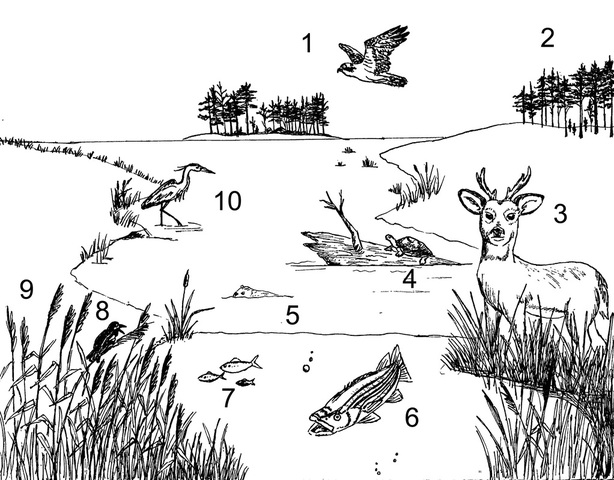Wildlife:
In the drawing below you will find some of the common critters along the Wicomico River. Many of them rely on one another for survival. This drawing however does not show the entire complexity of the wildlife found here. How many can you identify? Look below the drawing for some interesting facts about each living thing!
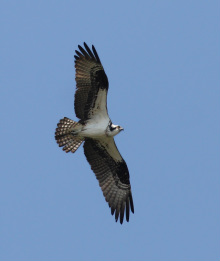 Photo courtesy of Bill Hubick Photo courtesy of Bill Hubick
1. Osprey:
An Osprey's diet consists almost entirely of fish. This earned them the nickname “sea hawk”. Ospreys make large nests on the top of dead or live trees like loblollies. They will also use nest platforms or other man-made structures like radio towers. Their populations have almost completely recovered from the late 60's crash. 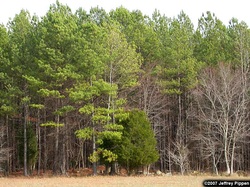 Photo courtesy of Jeff Pippen Photo courtesy of Jeff Pippen
2. Loblolly Pines:
Loblolly Pines are all over Wicomico! There are many tree farms around here, many of the loblollies are grown for pulp wood, or telephone poles because they grow very fast and very straight! Dead trees along marsh edges indicate sea level rise.  Photo courtesy of Bill Hubick Photo courtesy of Bill Hubick
3. White-tailed Deer:
Deer can be found all over the county. They often graze in open farm fields but prefer the shelter of forests especially during hunting season! They also can be found in the marshes too where the grasses provide great protection as well. 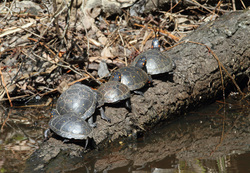 Photo courtesy of Bill Hubick Photo courtesy of Bill Hubick
4. Spotted Turtle:
The Spotted Turtle is one of the many aquatic turtles we have here. Note the many yellow spots on its shell. They like to hangout in stagnant water- water that is very slow moving or not at all. You can find turtles sunning themselves on fallen logs as pictured. 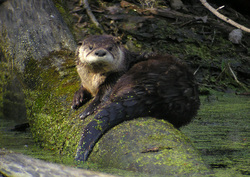 Photo courtesy of River Otter Academy Photo courtesy of River Otter Academy
5. River Otter:
Did you know that the Wicomico River has River Otters? Many people don't- they are found all throughout the river but are very elusive.They spend their days catching small fish and clams. |
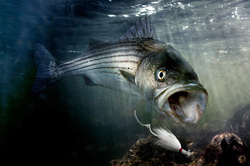 Photo courtesy of John Kuczala Photo courtesy of John Kuczala
6. Striped Bass:
Striped Bass are some of our largest fish here. Many people like to fish for them because they are good to eat! Striped Bass rely on Atlantic Menhaden, a small but numerous fish.They are also known as Rockfish. Learn more about Rockfish here: Striped Bass Info 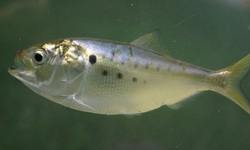 Photo courtesy of The Chesapeake Bay Program Photo courtesy of The Chesapeake Bay Program
7. Atlantic Menhaden:
This small fish gets preyed on by more than just Striped Bass! They are essential to the waters around here because many other animals rely on them like Ospreys, Eagles and Otters. 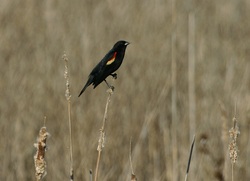 Photo courtesy of Bill Hubick Photo courtesy of Bill Hubick
8. Red-winged Blackbird:
Male Red-winged Blackbirds like the one pictured are extremely noticeable amongst these cattails. Females have no red shoulders and look more like sparrows. They nest in the marshes which not only is a great place for bugs that they like to eat but it also hides them from predators. 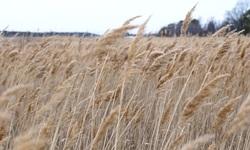 Photo courtesy of the Chesapeake Bay Program Photo courtesy of the Chesapeake Bay Program
9. Phragmites:
Phragmites is an invasive species from Europe. It grows fast and tall, much like Bamboo. Phragmites out competes many of our native grasses like Spartina. Learn more about phragmites here: Phragmites Info 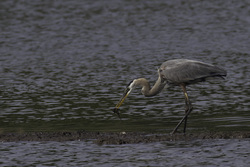 Photo courtesy of Bill Hubick Photo courtesy of Bill Hubick
10. Great Blue Heron:
Great Blue Herons are some of the most common birds here in the county. You can find some of their nest rookeries in the Loblolly Pines that are in the Salisbury Zoo! |
The following links below will take you to different pages regarding the different types of wildlife we have here in Wicomico County.
